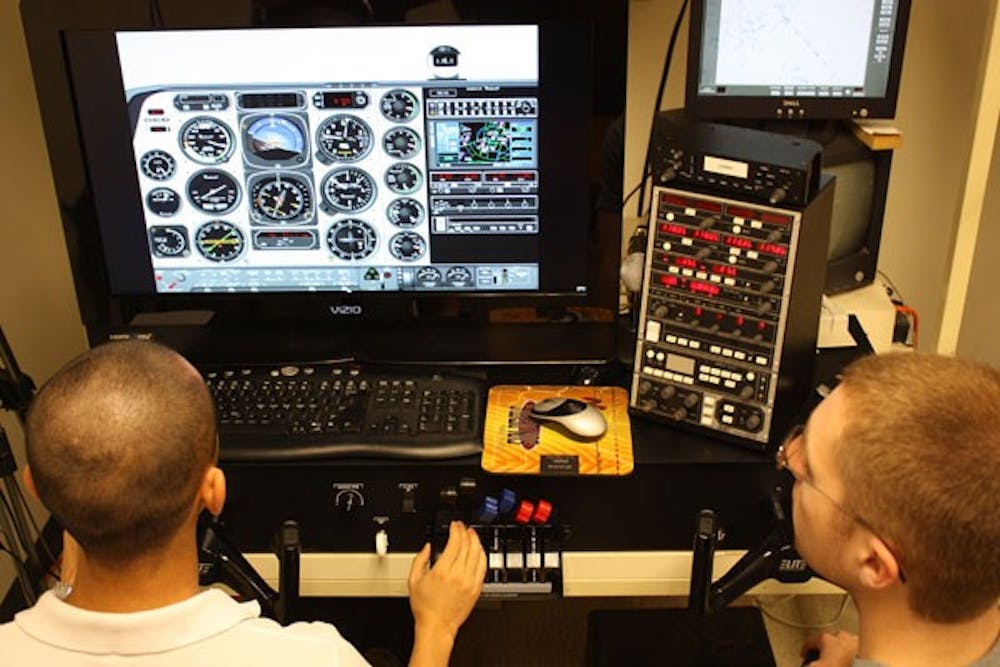Flight instructors in training on ASU’s Polytechnic campus are working with a new device this semester that allows them to practice flight techniques on one of the most realistic simulators the campus has seen to date.
The device — developed by the Air Force Research Laboratory — combines two single-control simulators, called personal control aviation training devices, to simulate a cockpit with two sets of controls. The device allows trainees to practice their skills in a more realistic way, aeronautical management technology professor Jim Anderson said.
“Everything up to instructor training is done from the left seat, then all of a sudden you have to transition to the right seat, so all of the controls are reversed,” Anderson said. “It forces
you to learn to fly in a whole new way, and up until this point we haven’t been able to fully simulate it.”
Anderson compared the device to a driver’s education car, where the instructor has a second wheel and set of pedals on the opposite side of the vehicle to demonstrate maneuvers and take control in case of an emergency.
“Flight instructors have to be prepared for those kinds of situations,” he said. “And they have to be prepared to do it with their controls reversed.”
Dee Andrews, senior scientist at the Air Force Laboratory, said the main goal of the device is to find new ways to train flight instructors.
“For years and years, we’ve been training flight instructors, but it’s always just been one instructor training another, and there’s not much empirical literature on it,” Andrews said. “Our main issue is to come up with that empirical evidence … so the dual-control is our best system to do that.”
Other similar devices are available, according to Pat Fitzgerald, a research psychologist with the Air Force, but this system was developed specifically to investigate instructor competencies and is hundreds of thousands of dollars less expensive.
The system requires only a normal computer screen, while other models are stand-alone devices, Fitzgerald said.
Anderson said he is happy with the way he has been able to incorporate the new system into his classes.
“The pitch control hangs up a little bit on occasion — that’s the one thing I wish I could change,” he said. “Otherwise, it’s perfect.”
Students in Anderson’s instructor classes said the device has allowed them to improve their multitasking, which is key to being a successful instructor.
Instructors are required to fly with their controls reversed while consistently talking to their students.
“It’s very good at keeping you vocal,” aeronautical management technology junior Nathan Rumancik said. “It’s still not a plane, but, for new instructors like me, I think it’s great.”
Currently, Anderson is using the device to combine two of his classes and benefit the students in both.
The students in Anderson’s instructor class are paired with students from his instrumentation class. The two work side by side on the dual-control simulator, with instructors in training teaching the other students 20 full lessons, consisting of different maneuvers and techniques.
Down the line, he plans to rework the program to incorporate the device even further.
“I’d like to make some adjustments after this semester … but so far, I think it’s already making their ground training much more applicable,” Anderson said. “It really opens their eyes, and hopefully it’s going to pay off for them, which is obviously my goal.”
Reach the reporter at keshoult@asu.edu





